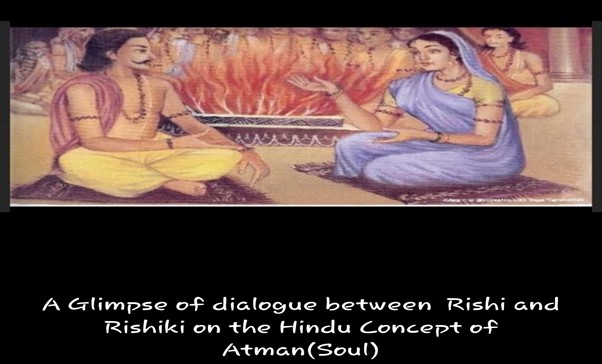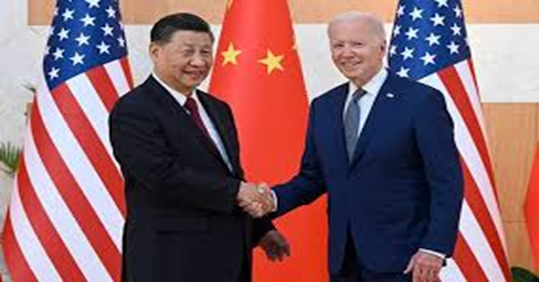A Distinct Nature of Feminism in Ancient Indian Literature
Posted on : April 18, 2022Author : Britya Gayen

It is generally assumed that the concept of feminism reached us from the west and we generally hear of feminists like Helen of Anjou, Laura Cereta, Sophia Elisabet Brenner, Blympe de Gouges, Anne Knight, Mary Wollstonecraft, Susan Anthony, Annie Basant, Laura Borden, Simone de Beauvoir, Susan Brownmiller; a long the list of the western feminists. (Notable Women International | Fembio.Org, n.d.) But if we study ancient Indian literature like Vedas, Ramayana and Mahabharata, it will be evident that the concept of feminism is embedded in it and its nature is completely different from the west, in keeping with cultural traditions. Therefore, it is important to search for the nature of our feminism in ancient Indian literature.
Feminism is presently a highly debatable issue across the globe from the view point of gender-inequality and women empowerment as one of the 17 Sustainable Development Goals. (THE 17 GOALS | Sustainable Development, n.d.) Literature, art etc capture the societal matrices of contemporary time. Hence, we can’t deny the importance of ancient Indian literature for identification of cultural heritage on any matter. Here, the stories of Ghosha, Lopamudra, Gargi and Maitreyei from Vedas as well as the two heroines Sita and Draupadi of the two epics – Ramayana and Mahabharata respectively need to be taken into account. From the analysis of the main women characters in the selected ancient Indian literature, the cultural tradition of Indian women can easily be derived.
The famous female figures of Vedic India are Ghosha, Lopamudra, Gargi and Maitreyei, who were the epitomes of intellectual and spiritual attainment. They both complimented and supplemented their male partners.(The Famous Female Figures of Vedic India, n.d.)
Ghosha was an Indian female philosopher and seer inthe Vedic period. She suffered from leprosy which had disfigured her. She fervently prayed to Ashvini Kumars, the divine physician twins who were proficient in rejuvenation. They taught her Madhu Vidhya, a Vedic teaching, a science of secret learning to restore youth and acquire immense knowledge, to get her cured of skin ailment. Ashvini Kumars cured her and restored her youthfulness, health and beauty due to her constant prayer. She was then married. Therefore, it can be said that in spite of her physical disabilities, Ghosha had strong will-force, which enabled her to get normalcy in life. Her story demonstrates that women need to overcome challenges, and this as important as leading a social movement.(A. Joshi, 2014)
Lopamudra was a philosopher according to ancient Vedic Indian literature. She was the wife of the sage Agastya. She was also a Rishiki in her own right. There are three versions of Lopamudra’s legend – the first one is in the Rigveda Hymns; the second one is in the epic Mahabharata (Vanaparva: Tirtha-yatra Parva) where there is an elaborate version which a mentions that Agastya Rishi did penance at Gangadwara (Haridwar) with the help of his wife, Lopamudra. The third version is Giridhara Ramayana, although it has a different story of Lopamudra. Indeed, she contributed a lot of hymns to Rigveda. These reflect her success and progress as a woman intellectual.(D. Joshi, 2005; Mukhopadhyaya, 2014)
Gargi was an ancient Indian woman philosopher. She was the daughter of the sage Vachaknu in the lineage of the sage Garga. From her young age, she had keen interest in Vedic scriptures and she had become very proficient in the fields of philosophy. She had a knowledge in Vedas and Upanishads as well as intellectual ability to debate with other philosophers at that time. She was honoured as one of the Navaratnas (Nine Gems) in the court of king Janaka of Mithila.(Ahuja, 2011)
Maitreyei was an Indian woman philosopher during the later Vedic period in ancient India. In ancient Sanskrit literature, she is known as Brahmavadini (expounder of Veda). She explored the Hindu concept of Atman (soul or self) in a dialogue with Yajnavalkya in the Brihadaranyaka Upanishad. From the dialogue between Maitreyei and Yajnavalkya, it has been derived that love is driven by a person’s soul. Therefore, it can be said that Maitreyei is cited as an example of the educational opportunities available to women in Vedic India. Besides, she is still considered as an icon of Indian intellectual women.(MAITREYI AND YAJNAVALKYA (Brihadaranyaka Upanishad), n.d.)
A woman’s educational and intellectual attainment can empower her in the voyage of her life. All the above-mentioned famous women had made themselves famous through their educational and intellectual attainment These ancient Indian women were feminists and their ideals move today’s Indian women towards the educational and intellectual attainment.
In the epic – the Ramayana written by Valmiki, the heroine Sita is feminist icon even to today’s women. She was steadfast in taking decisions during her life from the exile to the trial by fire to prove her innocence, to the taking up the responsibility of twin sons as a single mother and to the returning to her mother-Bhumi as a protest against patriarchy when she was asked again to prove her purity through the trial by fire. While some of these seem to reflect her submissive nature, however if we set our mind to enter into her decisions and activities, they reflect courage, rigidity and dignity and an ability to stand up against injustice in society. Thus, she is feminist icon for women even in the 21st century’s India. Welcome to Valmiki Ramayana | Valmiki Ramayanam, n.d.)
The Mahabharata is an another epic and it is the longest epic in the world. The heroine of this epic is Draupadi, who is also feminist icon for today’s women because of her fearlessness. When Yudhistira placed a bet on her and lost in the game of dice, she raised her voice for her rights. There was only one woman, Draupadi in a court full of the most powerful kings of that time. This pioneer of feminism, Draupadi dared to stand for herself and speak up aloud against male perpetrated injustices. Draupadi raised some questions about their Dharmas towards the most powerful kings of that time in the court. Her questions were a great challenge to the knowledge of right and wrong of the kings. It was beyond imagination of that time. From the view point of feminism, it was of course a strong voice against patriarchy.(Rajagopalachari & Rajagopalachari, 2018; Sacred-Texts: Hinduism, n.d.)
These legendary women in ancient Indian literature raised their voices and arguments against injustice; but they did equally admit that men and women are complementary to each other, having done their duties in spite of a lot of sufferings and hardships in the voyage of their life. This is the distinct nature of feminism that has been flowing in the heart of most Indian women since the time immemorial.
References:
Ahuja, M. L. (2011). Women in Indian Mythology. Rupa & Company.
Joshi, A. (2014). Awakening India: Swami Vivekananda. Arise Publishers & Distributors.
Joshi, D. (2005). Glimpses of Indian Culture. Star Publications.
MAITREYI AND YAJNAVALKYA (Brihadaranyaka Upanishad). (n.d.). Retrieved March 19, 2022, from https://www.speakingtree.in/blog/maitreyi-and-yajnavalkya-brihadaranyaka-upanishad
Mukhopadhyaya, D. R. (2014). The Rig Veda Reconsidered: The First Four Books of The Rig Veda In the Light of Modern Aesthetics. Anjali Publishers.
Notable women international | fembio.org. (n.d.). Retrieved March 19, 2022, from https://www.fembio.org/english/
Rajagopalachari, C., & Rajagopalachari, C. (2018). Mahabharata.
Sacred-Texts: Hinduism. (n.d.). Retrieved March 19, 2022, from https://www.sacred-texts.com/hin/maha/
THE 17 GOALS | Sustainable Development. (n.d.). Retrieved December 11, 2021, from https://sdgs.un.org/goals
The Famous Female Figures of Vedic India. (n.d.). Learn Religions. Retrieved March 19, 2022, from https://www.learnreligions.com/famous-female-figures-of-vedic-india-1770399
The Valmiki Ramayana eBook by Bibek Debroy—9789387326941 | Rakuten Kobo India. (n.d.). Retrieved March 19, 2022, from https://www.kobo.com/in/en/ebook/the-valmiki-ramayana
Welcome to Valmiki Ramayana | Valmiki Ramayanam. (n.d.). Retrieved March 19, 2022, from https://www.valmiki.iitk.ac.in/
BrityaGayen
Intern, Asia in Global Affairs
The views, thoughts, and opinions expressed in the text belong solely to the author, in his personal capacity. It does not reflect the policies and perspectives of Asia in Global Affairs.




